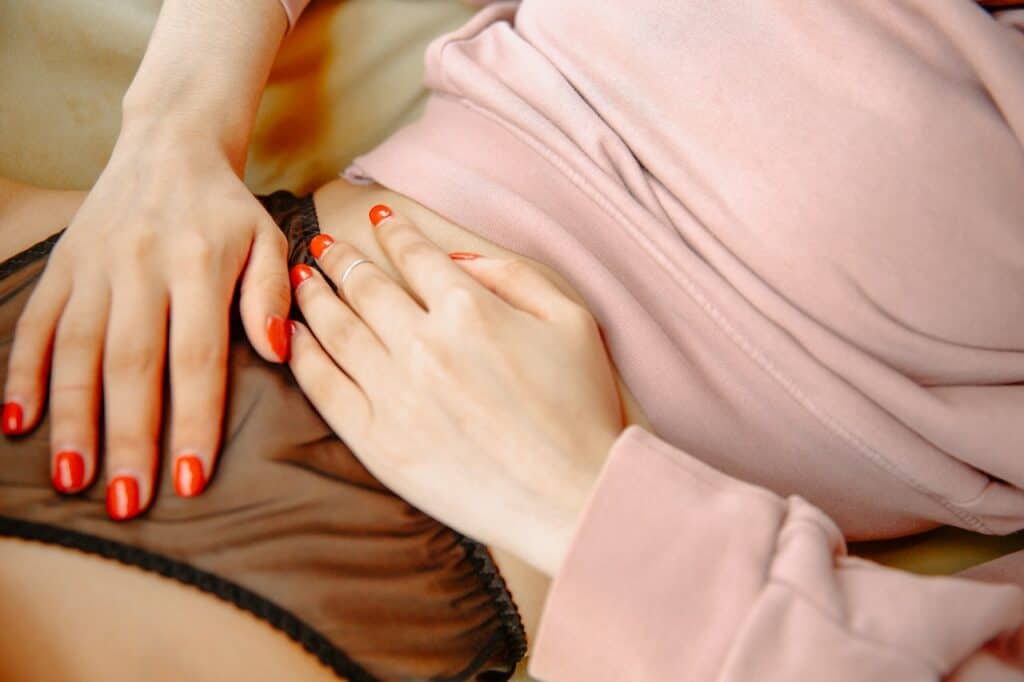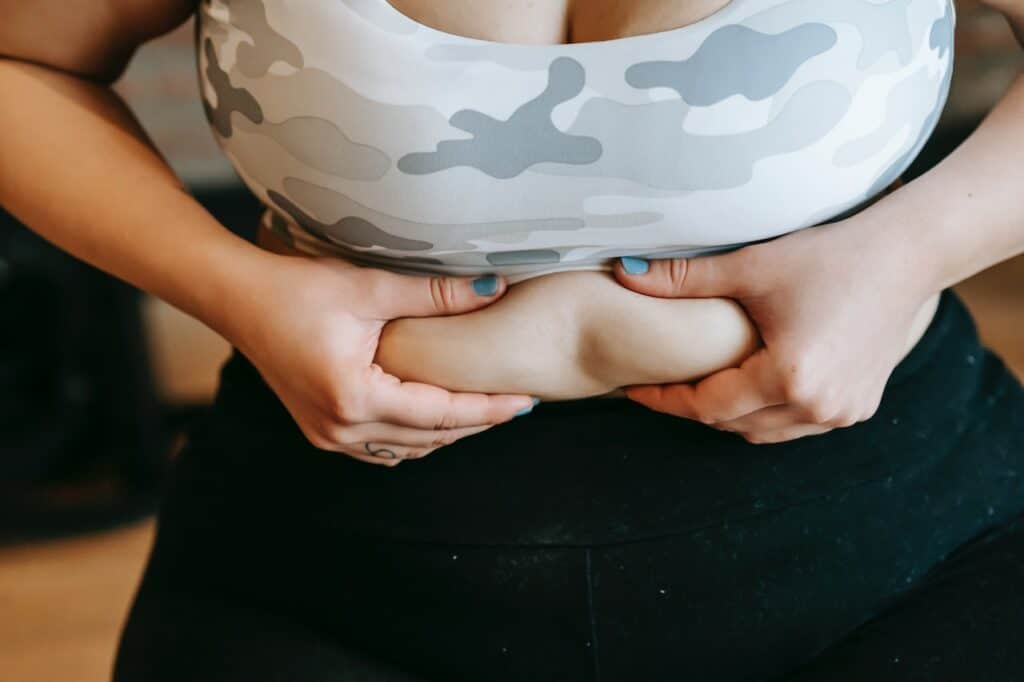Diastasis recti is a common condition that occurs when the rectus abdominis muscles separate, causing a gap in the abdominal wall. It can occur in both men and women, but it is most commonly associated with pregnancy and childbirth. The condition can cause a range of symptoms, including lower back pain, constipation, and difficulty with core stability.
One of the most common questions people have is How Long Does It Take for Diastasis Recti to Heal. The answer to this question can vary depending on a number of factors, including the severity of the condition, the individual’s overall health, and the treatment methods used. Understanding the healing process of diastasis recti can help individuals take the necessary steps to promote healing and prevent further damage.
Key Takeaways
- Diastasis recti is a condition where the rectus abdominis muscles separate, causing a gap in the abdominal wall.
- The healing process for diastasis recti can vary depending on the severity of the condition, overall health, and treatment methods used.
- Understanding the healing process of diastasis recti is important for promoting healing and preventing further damage.
Understanding Diastasis Recti
Diastasis recti is a medical condition that occurs when the abdominal muscles separate. The rectus abdominis muscles, which are located in the front of the abdomen, are joined together by a band of connective tissue called the linea alba. When this tissue becomes weakened or stretched, the muscles can separate, causing a gap in the abdominal wall.
This condition is most commonly seen in pregnant women, but it can also occur in men and women who have experienced significant weight gain or loss, as well as those who have undergone abdominal surgery. It is important to note that diastasis recti is not a hernia, although it can sometimes be mistaken for one.
The severity of diastasis recti can vary, with some individuals experiencing only a slight separation of the muscles, while others may have a more significant gap. Symptoms can include a protruding belly, lower back pain, and poor posture.
Treatment for diastasis recti typically involves exercises that target the abdominal muscles, such as pelvic tilts, crunches, and planks. In severe cases, surgery may be necessary to repair the separation.
It is important to note that diastasis recti is not always preventable, but maintaining a healthy weight and avoiding activities that place excessive strain on the abdominal muscles can help reduce the risk of developing this condition.
Diastasis Recti in Different Populations

Diastasis Recti in Women
Diastasis recti is a common condition among women, especially during and after pregnancy. Pregnancy is the most common cause of diastasis recti in women. The growing uterus puts pressure on the abdominal muscles, causing them to separate. Pregnancy hormones can also contribute to the condition by weakening the abdominal muscles.
Postpartum women with diastasis recti may experience back pain, pelvic pain, and urinary incontinence. It is important for women to properly exercise their core muscles after giving birth to help heal diastasis recti.
Diastasis Recti in Men
Although diastasis recti is more common in women, men can also develop the condition. Men who are overweight or have a history of abdominal surgery are at a higher risk for diastasis recti. Men with diastasis recti may experience back pain, abdominal pain, and difficulty with core exercises.
Diastasis Recti in Infants
Diastasis recti can also occur in infants, especially premature infants and newborn babies with a larger birth weight or who are twins or multiples. The condition is usually not harmful and usually resolves on its own as the abdominal muscles strengthen with growth.
Parents can help their infants by avoiding activities that put pressure on the abdomen, such as tummy time, until the condition resolves. Parents can also consult with their pediatrician for guidance on appropriate exercises for their infant.
In conclusion, diastasis recti can affect different populations in various ways. It is important to recognize the risk factors and symptoms associated with the condition and to seek proper treatment when necessary.
Symptoms of Diastasis Recti
Diastasis recti is a condition that affects the abdominal muscles. It occurs when the tissue that connects the two sides of the rectus abdominis muscle (the “six-pack” muscle) stretches and separates. This can cause a bulge or protrusion in the belly area, commonly referred to as a “mommy pooch” or “mommy tummy.”
Some common symptoms of diastasis recti include a visible bulge or protrusion in the abdomen, particularly when the person is lying down or doing a sit-up. In more severe cases, the bulge may be visible even when the person is standing up.
Many people with diastasis recti also experience back pain, as the weakened abdominal muscles can put extra strain on the back muscles. Other symptoms may include constipation, bloating, and difficulty breathing.
It is important to note that not everyone with diastasis recti will experience symptoms. Some people may have a mild case that does not cause any noticeable issues, while others may have a more severe case that requires medical attention.
If you suspect that you may have diastasis recti, it is important to speak with a healthcare professional for a proper diagnosis and treatment plan.
Complications of Diastasis Recti
Diastasis recti is a condition that can cause a number of complications in both men and women. The separation of the abdominal muscles can lead to a variety of problems, including pelvic floor dysfunction, hernias, low back pain, and urinary incontinence.

Pelvic floor dysfunction is a common complication of diastasis recti. The pelvic floor muscles are responsible for supporting the bladder, uterus, and rectum. When these muscles are weakened, it can lead to a variety of problems, including urinary and fecal incontinence.
Hernias can also be a complication of diastasis recti. A hernia occurs when an organ or tissue protrudes through a weakened area in the abdominal wall. The weakened abdominal muscles caused by diastasis recti can increase the risk of developing a hernia.
Low back pain is another common complication of diastasis recti. The weakened abdominal muscles can lead to an imbalance in the muscles of the lower back, causing pain and discomfort.
Constipation can also be a problem for individuals with diastasis recti. The weakened abdominal muscles can make it difficult to pass stool, leading to constipation and discomfort.
In addition, weakness in the abdominal muscles caused by diastasis recti can lead to hip pain and poor posture. This can cause further complications, such as increased risk of falls and injury.
Overall, it is important to address diastasis recti and its complications in a timely manner to prevent further health problems. Treatment options may include physical therapy, exercise, and in some cases, surgery.
Diagnosis of Diastasis Recti
Diastasis recti is a condition that is diagnosed by a healthcare provider or a physical therapist. The diagnosis is usually made by examining the abdominal muscles for separation. The separation is measured in finger widths, with a separation of two or more finger widths indicating diastasis recti.
In some cases, an ultrasound may be used to diagnose diastasis recti. An ultrasound can provide a more accurate measurement of the separation between the abdominal muscles. However, an ultrasound is not always necessary for diagnosis.
It is important to note that diastasis recti can also be diagnosed by a pelvic floor specialist. This is because diastasis recti can affect the pelvic floor muscles, which can lead to urinary or fecal incontinence.
During the examination, the healthcare provider or physical therapist may also check the alignment of the shoulders and hips. This is because poor alignment can contribute to the development of diastasis recti.
Overall, the diagnosis of diastasis recti is a straightforward process that can be done by a healthcare provider or physical therapist. It is important to seek medical attention if you suspect that you have diastasis recti, as early diagnosis and treatment can prevent the condition from worsening.
Treatment and Healing Process of Diastasis Recti
The treatment and healing process of diastasis recti involves a combination of exercises, physical therapy, and lifestyle changes. The goal is to strengthen the core muscles and reduce the pressure on the abdominal wall.
Safe and effective exercises are essential for healing diastasis recti. A physical therapist can provide guidance on appropriate exercises and ensure that they are performed correctly. Core strengthening exercises, such as those that target the transverse abdominis, are particularly beneficial.
It is important to note that diastasis recti may be more common in women who have had multiple pregnancies. In these cases, weight loss and core strengthening exercises may be particularly important.
Resolution of diastasis recti is possible with proper treatment and exercise. However, it is important to note that the condition may not be completely permanent. Ongoing core strengthening and education on safe exercise practices can help to maintain improvement.
Overall, with the right treatment and exercise program, diastasis recti can be healed and core strength can be improved.
Prevention of Diastasis Recti
Preventing diastasis recti is the best approach to avoid the complications that can arise from it. Here are some measures that can help prevent diastasis recti:

1. Proper Posture
One of the primary causes of diastasis recti is poor posture. Therefore, it is essential to maintain proper posture during daily activities. When standing, the feet should be flat on the ground, and the shoulders should be relaxed. The spine should be in a neutral position, and the pelvis should be tucked in.
2. Avoid Heavy Lifting
Lifting heavy weights can put pressure on the abdominal muscles, leading to diastasis recti. Therefore, it is crucial to avoid lifting heavy weights, especially during pregnancy and postpartum.
3. Exercise with Caution
Exercises that involve crunches, sit-ups, or any movement that puts excessive pressure on the abdominal muscles should be avoided. Instead, exercises that focus on strengthening the pelvic floor, hip, and diaphragm muscles are recommended.
4. Connective Tissue Health
Connective tissue health is vital in preventing diastasis recti. Therefore, it is essential to maintain a healthy diet, stay hydrated, and avoid bloating.
5. C-Section
Women who undergo a C-section are at a higher risk of developing diastasis recti. Therefore, it is essential to follow the physician’s instructions and avoid heavy lifting during the recovery period.
In conclusion, preventing diastasis recti is the best approach to avoid the complications that can arise from it. By maintaining proper posture, avoiding heavy lifting, exercising with caution, focusing on connective tissue health, and following the physician’s instructions, one can reduce the risk of developing diastasis recti.
Related post: Will Losing Weight Fix Diastasis Recti
Frequently Asked Questions
How long does it take for diastasis recti to heal with exercise?
The time it takes to heal diastasis recti with exercise varies depending on the severity of the condition and the consistency of the exercise routine. With proper exercise and consistent effort, it can take anywhere from a few weeks to several months to see significant improvement.
How long does it take for diastasis recti to heal after a c-section?
Healing time for diastasis recti after a c-section can vary. It typically takes longer to heal after a c-section than after a vaginal birth. Women who have had a c-section may need to wait 6-8 weeks before beginning an exercise routine. It can take several months to a year or more to see significant improvement in diastasis recti after a c-section.
How to fix diastasis recti years later?
It is possible to fix diastasis recti years later with proper exercise and consistent effort. However, the longer the condition has been present, the longer it may take to see improvement. It is important to consult with a medical professional before beginning any exercise routine to ensure safety and effectiveness.
When is diastasis recti considered closed?
Diastasis recti is considered closed when the gap between the abdominal muscles is less than two finger widths. However, it is important to note that the gap may still be present even if it is less than two finger widths. It is best to consult with a medical professional to determine if diastasis recti is fully closed.
Is diastasis recti dangerous?
Diastasis recti is not considered dangerous, but it can cause discomfort and affect the appearance of the abdomen. It can also lead to other issues such as back pain and poor posture. It is important to consult with a medical professional to determine the best course of action for treating diastasis recti.
What happens if you don’t fix diastasis recti?
If left untreated, diastasis recti can lead to other issues such as back pain, poor posture, and difficulty with daily activities. It can also affect the appearance of the abdomen and cause discomfort. It is important to consult with a medical professional to determine the best course of action for treating diastasis recti.

Iesha is a loving mother of 2 beautiful children. She’s an active parent who enjoys indoor and outdoor adventures with her family. Her mission is to share practical and realistic parenting advice to help the parenting community becoming stronger.
